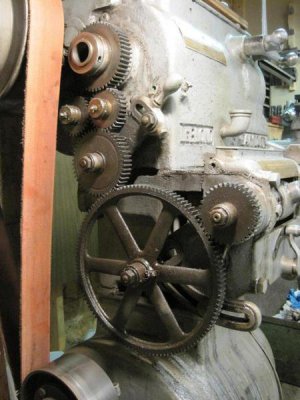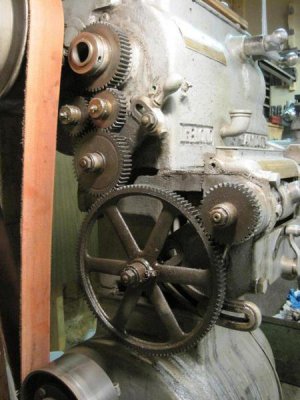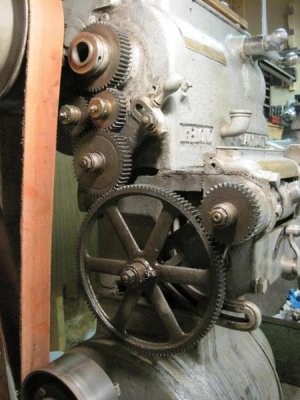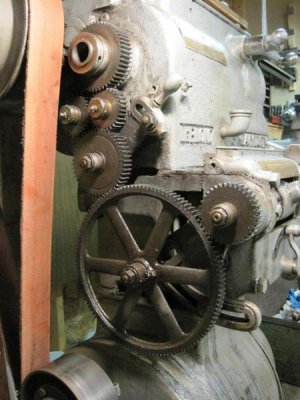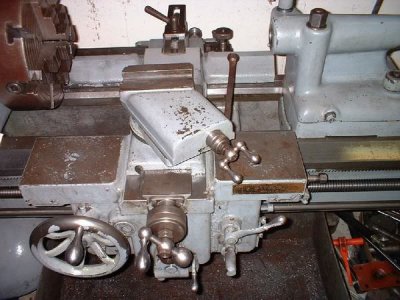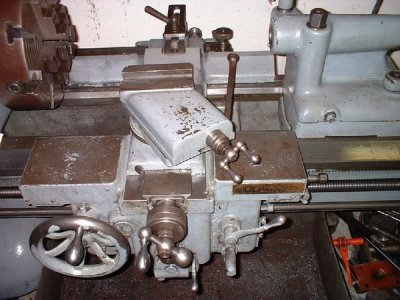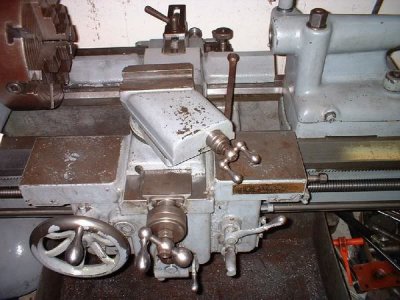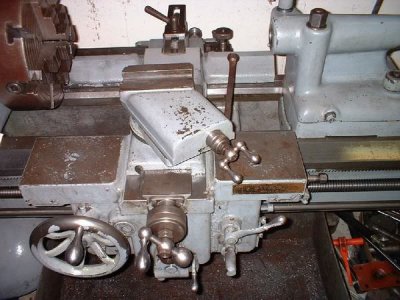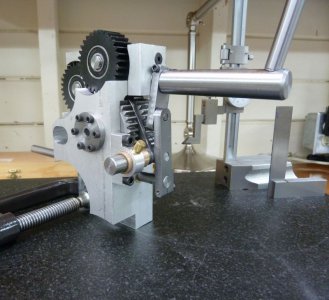Yes, the top gear is fixed to the spindle on the Leblond. And, yes oceans of space to create this clutch! Too much space maybe--There will probably be a need for some additional idler gears somewhere in there.
I think I do understand the "big picture" of what this modification does for threading and even pretty much how it works. It's the details in those drawings that have me scratching my head. For instance the actual mechanism by which the lever transfers its motion to the dog clutch is not at all clear to me. I can't make out any eccentric, lever, or other mechanism that connects the hand-lever to the clutch! I know there is one, but??? I'm guessing that some of the details can be implemented any number of different ways, and that your implementation may even be different in this regard. Like I said earlier, I'm looking forward to seeing the article in Home Shop Machinist.
Another example of my confusion is that the stud that the reverser gears run on seem to have a large radial hole in it that the shaft for the hand-lever goes through! It's not clear to me why it's done that way. I'm guessing that it's not important to the design, but rather was a design choice that was made to keep things compact. . . . Yet??? And, again another implementation could be totally different.

ondering:
I have been jones-ing for metric threading for some time now. The old Leblond is in suprisingly good shape for its age. I has an interesting range of features including QCGB, taper attachment, separate feed rod and threading leadscrew, clutch on the spindle, etc. Even though it's top speed doesn't compare to modern offerings, it's variety of low speed settings, variety of work-holding, etc. make up for it--well at least in my mind! That's a rather long way of saying that I'm not willing to give it up just for lack of metric threading. OTOH, it does have a threaded spindle, which prevents me from employing a common method that others use to perform metric threading (stopping spindle, reversing to the beginning of the thread, stopping spindle, doing another pass, etc.).
That's where this dog-clutch comes in! The spindle is never reversed; therefore, no issues with the attachment of my chuck to a threaded spindle.
You mentioned that the stress on the clutch is quite low. I've been thinking about that too. When the dog clutch is reversed, the gear train would have as much as 300+ degrees of rotation to coast to a stop before the pin reaches the end of the slot and starts driving in the other direction. Even then the backlash between all the gears in the train will be taken up incrementally before the whole train is fully reversed and driving in the opposite direction. Like you said--not that much stress at all!
Going a bit further off the track--I mentioned that the big gear is 121 tooth in my last post. I'm not 100% sure of that. I counted again and got 120 teeth. Lighting is poor, it's difficult not to lose track w/ all those teeth, etc. The thing is, I'm pretty sure that it doesn't matter. With the 10DP gears that I've got, a 127 tooth gear would be 12.9" in diameter. Even if I could source a gear blank of this size, I couldn't cut the teeth--mind you I haven't actually made any other gear yet, either. It's just that doing work on the scale of 127 teeth on a 13" gear blank is quite different than doing a 47 tooth gear (4.9" diameter gear blank), which would be utilized for a set of 47/37 tooth metric conversion gears!
Thanks for doing the legwork on this project and blazing a trail for folks like me to follow!
Jim


